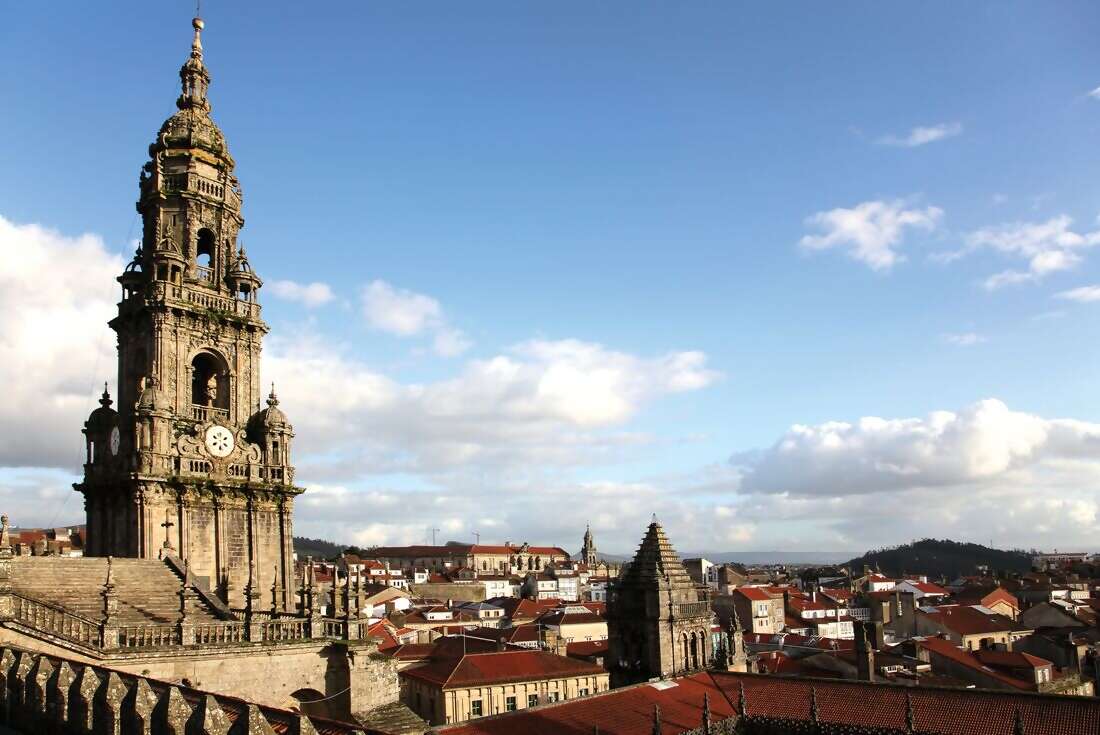 Challenge yourself to a journey from pretty Porto to the historic Cathedral of Santiago de Compostela on an 11-day alternative coastal Camino trail. This Portuguese Camino trail passes through coastal Baiona, Vigo and Redondela, and joins the pilgrim route onwards to Pontevedra, Caldas de Reis, Padron, and finishing in Santiago de Compostela. You’ll embark on a journey through the countryside in mostly north-western Spain, retracing the ‘Way of Saint James’, trekking past the Bay of Vigo, visiting old churches and quaint villages. As one of the three most important Christian pilgrimages, you’ll take part in a powerful journey through some idyllic landscapes and via some beautiful towns.
Challenge yourself to a journey from pretty Porto to the historic Cathedral of Santiago de Compostela on an 11-day alternative coastal Camino trail. This Portuguese Camino trail passes through coastal Baiona, Vigo and Redondela, and joins the pilgrim route onwards to Pontevedra, Caldas de Reis, Padron, and finishing in Santiago de Compostela. You’ll embark on a journey through the countryside in mostly north-western Spain, retracing the ‘Way of Saint James’, trekking past the Bay of Vigo, visiting old churches and quaint villages. As one of the three most important Christian pilgrimages, you’ll take part in a powerful journey through some idyllic landscapes and via some beautiful towns.Highlights
Journey this mostly coastal walk to Santiago de Compostela – a lesser-known trail with fewer pilgrims along the way.
Feast on some of the best Spanish seafood and Albarino wine in Arcade, on a substantial lunch stop on the way to Pontevedra.
Trek a fair distance each day, but be able to relax along the way, with dedicated rest days in seaside Vigo and inland Caldas de Reis.
Visit one of the bodegas (wineries) in the region of Caldas de Rei and have the opportunity to soak in the renowned hot springs in the area.
Explore the marvels of Saint James’s resting place at the Cathedral de Santiago and the medieval old town surrounding as a reward for conquering this journey





- You will visit the following places:
-

Porto
Porto (also known as Oporto in English), is the second largest city in Portugal after Lisbon and one of the major urban areas of the Iberian Peninsula. The urban area of Porto, which extends beyond the administrative limits of the city, has a population of 1.4 million (2011) in an area of 389 km2 (150 sq mi), making it the second-largest urban area in Portugal. Located along the Douro river estuary in Northern Portugal, Porto is one of the oldest European centres, and its historical core was proclaimed a World Heritage Site by UNESCO in 1996. The western part of its urban area extends to the coastline of the Atlantic Ocean. Its settlement dates back many centuries, when it was an outpost of the Roman Empire. One of Portugal's internationally famous exports, port wine, is named for Porto, since the metropolitan area, and in particular the caves of Vila Nova de Gaia, were responsible for the packaging, transport and export of the fortified wine. In 2014, Porto was elected The Best European Destination by the Best European Destinations Agency.
-

Vigo
-

Santiago de Compostela
Santiago de Compostela, commonly known as Santiago, is the capital of the autonomous community of Galicia in northwestern Spain. The city has its origin in the shrine of Saint James the Great, now the city's cathedral, as destination of the Way of St. James, a leading Catholic pilgrimage route originated in the 9th century. In 1985 the city's Old Town was designated a UNESCO World Heritage Site.